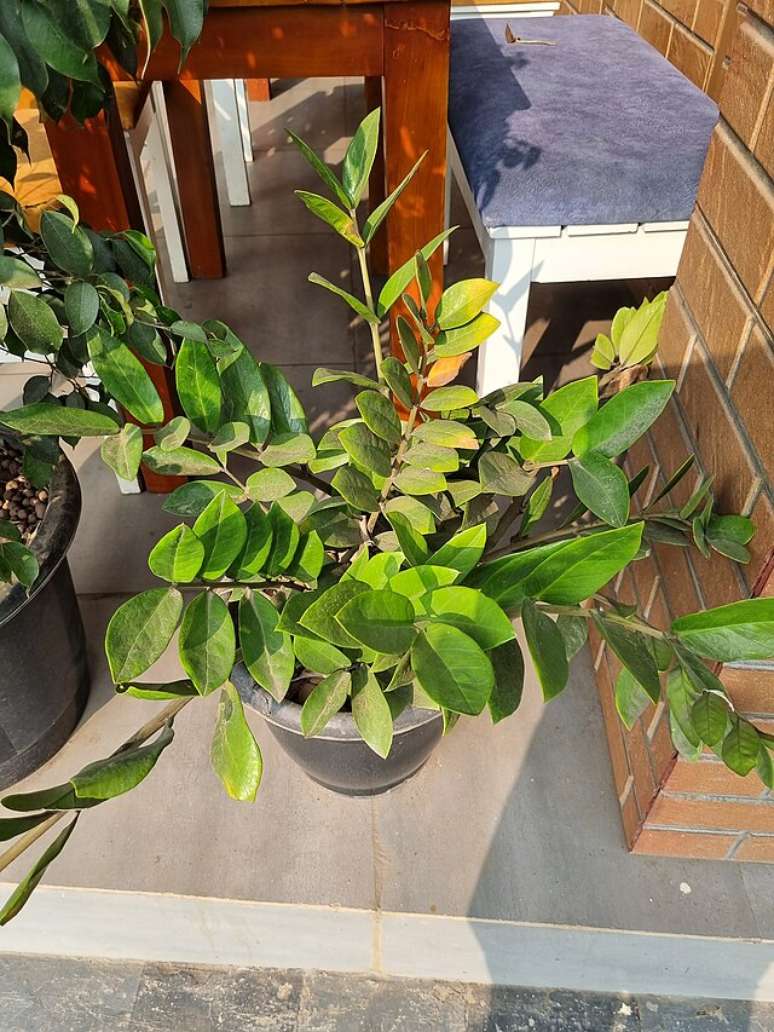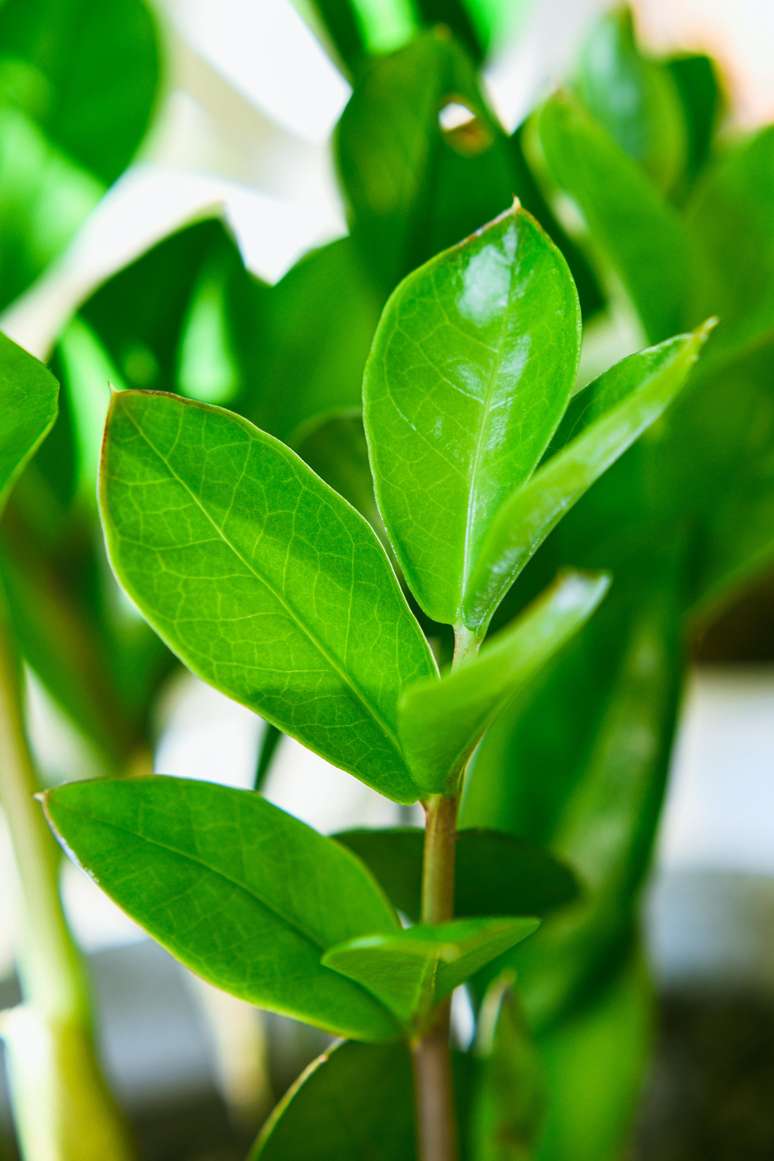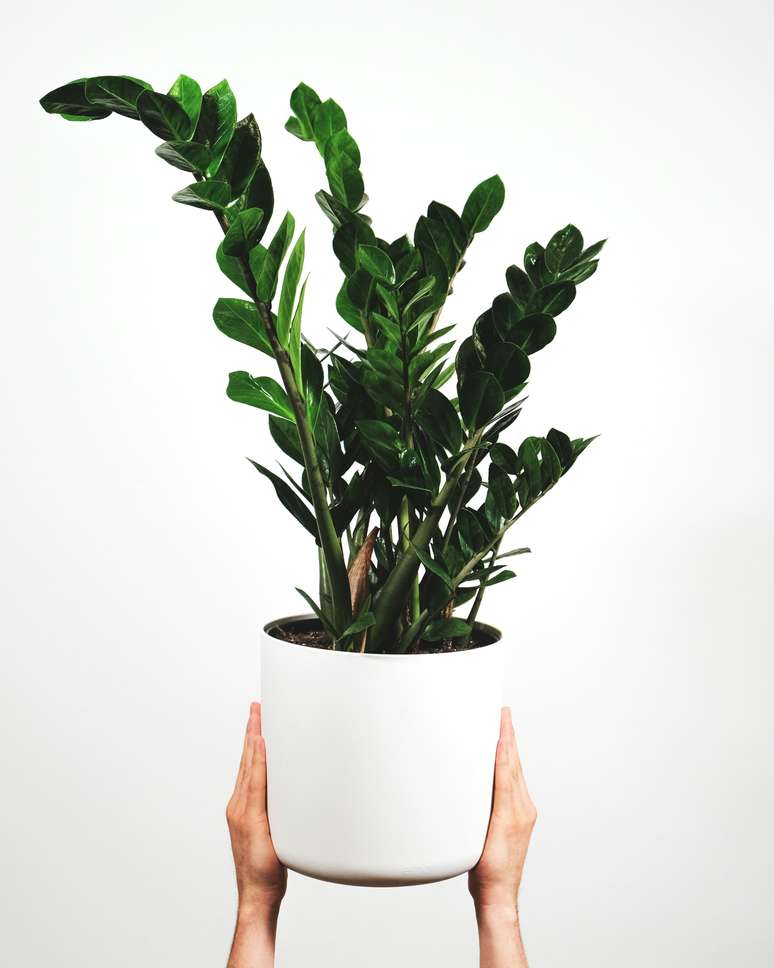The deep green, waxy leaves are sometimes mistaken for artificial
A ZZ plant it is a plant of the Araceae family, which belongs to the Zamioculcas genus, being the only species of the entire genus! It is a succulent native to Africa and has gained a lot of popularity because of this low maintenance, resistance and beauty.
The landscape designer Renata Guastelli shared everything you need to know to grow it at home. “It has dark green, shiny, fleshy leaves that grow on upright stems. The ZZ plant is ideal for those looking for a plant that is easy to grow and adapts well to indoor environments,” he says.
Remembering that Zamioculca is toxic if ingestedso you have to be careful around children and pets.
The best pot for planting Zamioculca
“To plant the ZZ plant, you can use a ceramic or plastic vase, with holes in the bottom to allow excess water to drain away“, comments the landscape designer.
What type of soil to use for planting Zamioculca
The best substrate for growing the ZZ plant is a mixture of potting soil, sand and perlite. Renata emphasizes that it should be light and airy.

How to water your Zamioculca
Like all succulents, the ZZ plant does not require a lot of water. “Water only when the soil is dry to the touch. Avoid wetting the leaves and stem, as this can cause rot,” is the landscaper’s recommendation.
Zamioculca fertilization
“The fertilization of the ZZ plant should be carried out every two months, during spring and summer, with a liquid fertilizer diluted in the irrigation water. Choose a specific product for succulents or cacti, which contains the nutrients necessary for their development “, it is read.

Zamioculca pruning
Renata comments that pruning the ZZ plant is not mandatory, “but can be done to remove dry or damaged leaves, or to control its size.”
Tips for Planting Zamioculca
Some tips for caring for the ZZ plant are:
- keep it in a place with indirect light or partial shade, as direct sun can burn the leaves;
- avoid exposing it to very low or very high temperatures, as it prefers mild environments;
- clean the leaves with a damp cloth to remove dust and avoid parasites;
- and transplant it every two years, into a larger pot, to renew the substrate and stimulate its growth.
Source: Terra
Ben Stock is a lifestyle journalist and author at Gossipify. He writes about topics such as health, wellness, travel, food and home decor. He provides practical advice and inspiration to improve well-being, keeps readers up to date with latest lifestyle news and trends, known for his engaging writing style, in-depth analysis and unique perspectives.








